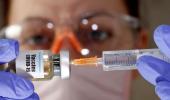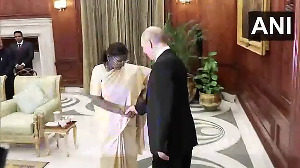'Essentially there are three things the government should be doing: Identify who you are going to get your vaccine from, figure out how you are going to pay for it, and figure out how you're going to deliver it and to whom.'
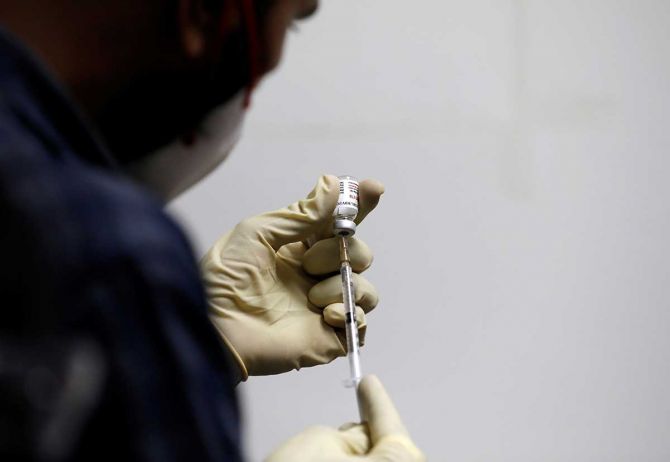
When the vaccine/s against COVID-19 come to India, they will not bring miracles or magic in their wake.
Nor will they suddenly offer 100 per cent protection to all. Or sudden relief from the shackles that this disease has bound us in.
Vaccination will be a slow process.
Our New Normal may have to continue, with masks and the obligatory six feet distancing, for still many days to come, before we can rid ourselves of this tedious, tiresome virus.
Dr Gagandeep Kang, professor of microbiology, at the Wellcome Trust Research Laboratory, division of gastrointestinal sciences at the Christian Medical College, Vellore -- the first Indian woman scientist to be elected as a Fellow of the Royal Society -- has many valuable years of knowhow in introducing and implementing vaccine trials and schemes in India, having worked on establishing such programmes for rotavirus, typhoid and cholera.
She discusses the difficulties to be expected in the road ahead, when vaccines arrive, in an interview with Vaihayasi Pande Daniel/Rediff.com.
Dr Kang also examines the consequences of any possible upcoming rural surge.
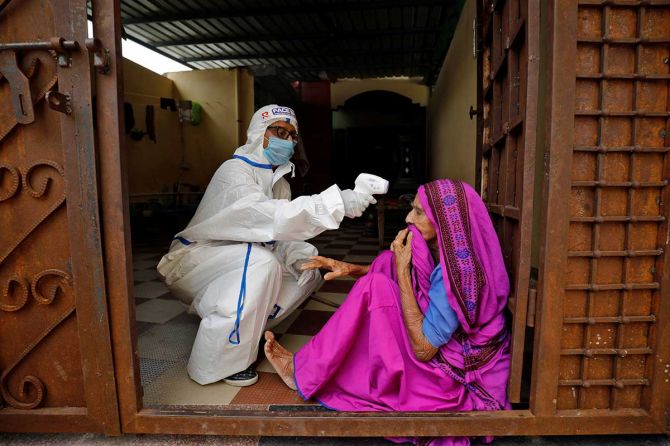
There has been a lot of articles about the rural surge and about how people in villages don't really understand the nature of COVID-19.
Given that we don't have that great facilities at the very lowest rural level, and we didn't really improve them that much in the lockdown period, can mortality rise, if there's a heavy spread in the rural areas?
And what is your view on rural spread and what is the picture that appears to you of the rural situation?
There are some advantages and some disadvantages to being in rural areas.
The advantages are that within villages, those are units, where you have to have an actual introduction of the disease.
And if you can pick it up (detect) early, and quarantine, you won't spread it.
Populations are isolated.
And that can be an advantage because control requires local measures.
The disadvantage is the question of access to health care.
When you look at this virus, it's a virus that produces asymptomatic, mild, or moderate disease in the bulk of people.
Even when you have a population that has the elderly or has comorbidities, that is still a population that will survive a infection of coronavirus, more often than not.
Access to health care in villages for the people who get infected, and who get really sick, is a problem.
Accessibility and transport in rural areas has improved a lot.
But is getting them to a place that doesn't have facilities a perfect solution?
No, it won't be.
You will need for a small proportion of cases to try to get them to facilities that can really handle such patients.
Do we have such facilities in rural areas?
Not enough.
That question of accessing the right level of care is an issue.
If people cannot get to the right kind of care, deaths will happen.
Because you won't be able to manage the disease, you won't be able to provide oxygen, you will not be able to provide the supportive therapy.
So, as I said, in rural areas, we could be looking at increased mortality.
But we also know that because these populations are isolated, we could have villages where it doesn't go.

Can we look at rural India in one breath ie based on the standard type of health facilities that is generally provided at a village level by the government.
Or is it going to be different in different rural areas?
Different states are very different in the kind of care that is provided.
For example, in Tamil Nadu, the primary health centres really are pretty good and referral services for rural areas are very good.
That's not true of every state in the country.
A lot depends on the state of the infrastructure in that location.
But if you look at it, even in urban areas the spread of infection depends very much on where you live.
This is almost like a hyper-local infection.
You get infection entering into your community.
Then spread is determined by population density, social mixing patterns.
All the things that drive infection happen at a relatively local level, your household, your street, your community.

You read articles about India in our local press, and you read articles about India in the international press.
Of course, people abroad keep remarking that India is opening up even though your cases are growing.
Is there something about that narrative that that people don't understand?
Our economic compulsions?
Or are we being foolhardy in the manner in which we are opening up?
Like, for instance, in Bombay recently buses are being allowed to run full capacity.
What is the right narrative, really?
There are certain things to be aware of.
There is no activity that is 100 per cent safe, except isolating the entire world, one person from another person for a period of three weeks.
If you don't come in contact with anybody for three weeks, anybody, and the virus wherever it's going to surface, it will surface and you will be done with that.
But that's not feasible.
Every activity that you do carries some level of risk.
What you need to do from a public health point of view is calibrate that risk and decide what kind of activities are likely to result in spread or not.
In a place that hasn't seen the virus, why would you want them to stop doing everything?
What you need really is local data to inform local decisions about what needs to be done.

You know that the virus spreads person to person.
What are the highest-risk activities?
What brings people in closest contact to each other?
And then say: 'Okay, these are activities that are high risk activities.
Let's try to avoid them in this location, which has an increase in the number of cases'.
There is no need to restrict that same activity in a place that does not have those infections.
So you gave the example of public transport -- Should public transport be stopped over the entire country forever?
That doesn't make sense.
You have to calibrate where you have public transport, at what level, recognising that nothing is going to be ever 100 per cent safe.
But it isn't about SARS CoV-2 only too.
It's also about influenza.
It's also about tuberculosis.
All of these diseases spread through the respiratory route.
When you have people who travel in buses, all the time, and crowded buses and somebody has a cough, you could have TB transmission.
We know that.
But we're not stopping buses.
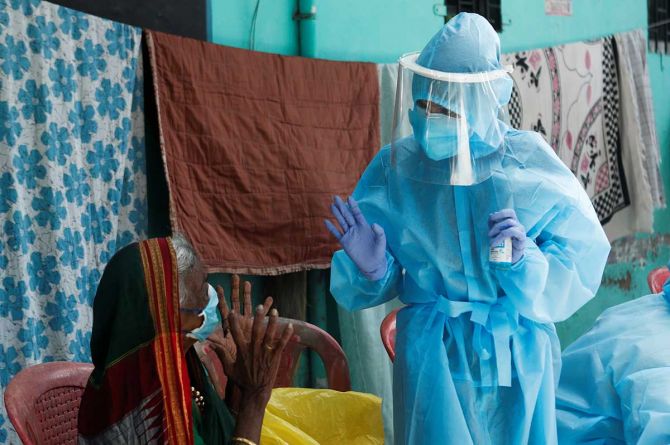
It really is a question of calibrating risk, over location, over time, depending on the information that you have.
If you look at the work that was done by Dr (Muffazal) Lakdawala in Dharavi (Mumbai), where the group that he worked with recognised that people in Dharavi do not have the opportunity to self-isolate.
Essentially what they did was offer everybody who tested positive in Dharavi the opportunity to come out of that area to a quarantine centre somewhere else, which means that their families were protected.
If you can offer support to people for isolation, it can be done in any location.
But the important thing is: Offer that support.
Make sure that their families are looked after.
Food is not an issue.
Make sure that the person who is taken out, if they are the wage earner, you need to figure out a way of supporting their families during that time.
There are approaches where this can be done.
And we've had examples of that.

But for people who do not live in slums ie people who live in houses and the high rises, they are now faced with choices.
We know that this virus is going to be with us for a long time.
People are faced with choosing to go to the dentist or a family function.
To my mind that social/family function, no matter how small can still be avoided.
But that's not how most people are looking at it.
Then again one has to wonder how long will people avoid social functions for?
What is your take on those baby steps that each of us are faced with?
I think everybody has a different risk appetite.
The one thing that I think we should do is be responsible, and make sure that we do our best to slow the spread of infection.
You know: What can I do?
Assuming that I am infected, what can I do to prevent the spread of infection to others?
What's the best that I can do?
If you view it from that angle, then it is a question of taking responsibility for social good.
If I really, really have a procedure that requires me to see the dentist, I would see the dentist.
I would expect the dentist to follow all possible protocols to make sure that I don't infect the dentist and the dentist doesn't infect me.
If it is a tooth whitening or cosmetic procedure, then at this time is not something that is essential.

And what about social life?
I think again, it's a question of risk versus benefit.
The same questions are being asked about schools.
Do we keep schools closed forever?
We are recognising the damage that is done.
Doing school online is all very well for people who have good internet connections and excellent computers.
But children for whom phone lines are a problem, let alone computers, asking them to stay out of school is damaging their cognitive growth, their social growth, as well as the more directly measured outcomes of education.
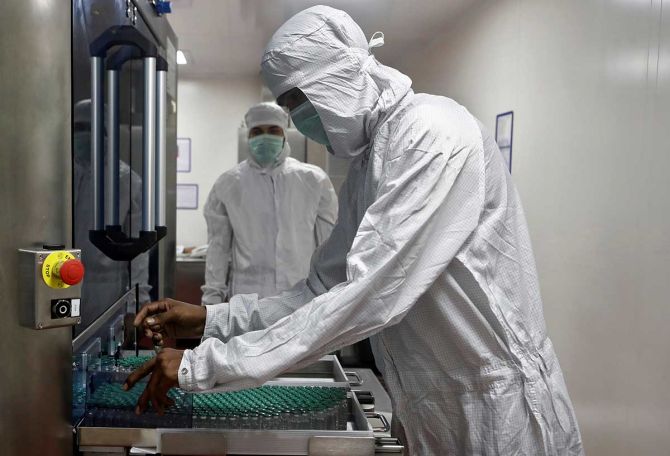
I understand you have some familiarity with working with vaccine programmes before.
Can the vaccine come quicker than then it's expected?
Then, who should be injected first, apart from the frontline workers?
Should be the vulnerable or whether it should be the people who will spread the disease more?
What is the most important thing that the government needs to keep in mind while structuring our vaccine programme?
Let's start with: People think vaccines are going to solve this problem.
They are one tool.
They are not the only tool.
Vaccines when they come, it would be a miracle vaccine if it prevented 100 per cent of infections in all the people who were vaccinated.
I doubt very much that that is going to happen.
Vaccines prevent the large proportion of infections and thereby reduce both disease and the pool of infected people in the population that can transmit disease.
Vaccines are one tool for control.
And we should not expect that today we have a vaccine and tomorrow life is normal.
In terms of the speed at which vaccines are being made, yes, absolutely.
We are very lucky that science is at a stage where we can progress multiple kinds of vaccines this quickly.
The commitment of vaccine manufacturers, the commitment of researchers, the commitment of people who have participated in the clinical trials are all really something that is truly remarkable and has never been seen before.
It's going to be absolutely essential in getting us to having one to three or four vaccines that we know work to prevent the disease.
Now, a lot of people ask questions about whether this is a form of compromise. No.
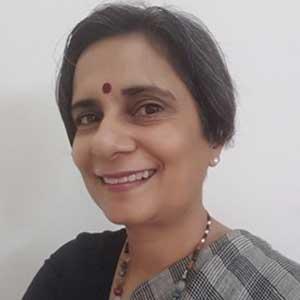 IMAGE: Dr Gagandeep Kang
IMAGE: Dr Gagandeep KangWhat is happening is instead of doing everything sequentially, we are parallel processing.
The same studies that require to be done and are usually done (via several phases): One, break, two, break, three, license, are not being done like that.
They are being done: Let's start one.
Okay, we've got data from one.
Looking, alright.
Let's go to two.
Okay, we've got data from two.
Let's see, what three looks like.
Let's get started.
Let's do three.
Let's not wait till three is completely finished.
But do the interim analysis and look at when we can have an emergency use authorisation, while continuing to do three till completion like we had planned.
There is a difference in how vaccines are being developed.
But in terms of quality, in terms of safety, in terms of numbers to get a read out, nothing is changing.
So that's an important thing to remember.
Then, in terms of priority and allocation, those are hugely complicated discussions.
Essentially there are three things the government should be doing: Identify who you are going to get your vaccine from, figure out how you are going to pay for it, and figure out how you're going to deliver it and to whom.
So, your prioritisation discussion also plays into that.
It's a lot.
And WHO and others had done a lot of work on it.
And all of this is being done without knowing which vaccine is going to succeed when.
So, it's challenging.
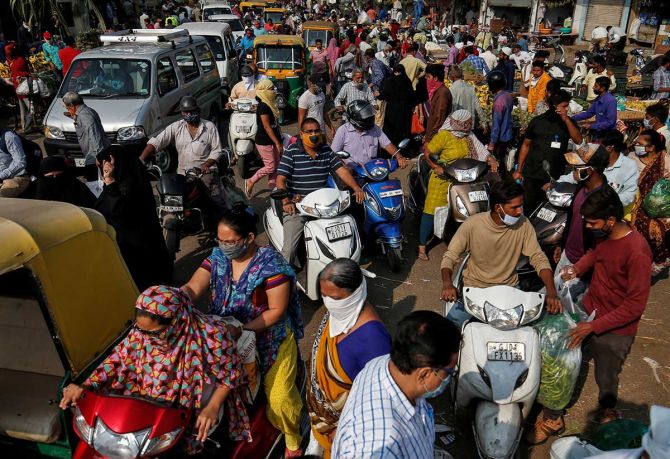
In the context of herd immunity, are we in India and maybe elsewhere also, relying too much on herd immunity?
Herd immunity may not last?
We are not relying on herd immunity in India.
Everything that the government is doing does not indicate that the government is relying on herd immunity
If it did you wouldn't bother to test.
Does herd immunity last?
It depends on the infection.
And this is not an infection that we know enough about.
If you look at a disease, like measles, for example, it's herd immunity for measles with vaccination.
Even though it is a hugely infectious disease -- about six times as infectious as SARS-CoV-2 -- we did not get to herd immunity with measles without the vaccine.
These concepts are misunderstood in the popular press quite frequently.
And for this particular virus, we don't know whether the infection will give herd immunity or whether we will need vaccination as well, or even if it will be possible with both infection or vaccination.
There is a lot of myth-busting to be done for COVID-19.
What is the most critical myth-busting you feel the need to emphasise, that people do not understand about this disease, which is very important?
I think, people don't understand how little we know, and how much we are learning.
To expect to have answers in 10 months after we've seen a virus for the first time, we have learned a great deal about it.
But we still don't know everything that will help us towards control.
Feature Presentation: Ashish Narsale/Rediff.com


